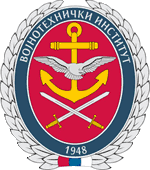|
REPUBLIC OF SERBIA MINISTRY OF DEFENCE
MINISTRY OF DEFENCE Material Resources Sector Defensive Technologies Department
|
HFSW radar design: tactical, technological and environmental challenges
DEJAN NIKOLIĆ Institute VLATACOM, Belgrade, Serbia, dejan.nikolic@vlatacom.com Bojan DŽolić Institute VLATACOM, Belgrade, Serbia, bojan.dzolic@vlatacom.com NIKOLA TOSIĆ Institute VLATACOM, Belgrade, Serbia, nikola.tosic@vlatacom.com NIKOLA LEKIĆ Institute VLATACOM, Belgrade, Serbia, nikola.lekic@vlatacom.com VLADIMIR D. ORLIĆ Institute VLATACOM, Belgrade, Serbia, vladimir.orlic@vlatacom.com BRANISLAV M. TODOROVIĆ Institute VLATACOM, Belgrade, Serbia, branislav.todorović@vlatacom.com
Abstract: With maximal range of about 200 nautical miles, as along with ship detection and oceanographic monitoring functionalities, HFSW radars provide unique capability of complete Exclusive Economic Zone monitoring. Uniqueness of HFSW propagation, which follows Earth’s curvature, introduces various challenges accordingly, thus making HFSW radar design a very challenging task. The most important factors such as electrical properties of the water and the height of waves on the sea/ocean, levels of natural and man-made noise, interference, as well as sea clutter, must be carefully considered during the design and development processes of HFSW radar. More over, tactical demands represent new challenges, which especially influence installation and operation of HFSW radar. Keywords: Radar, HF radar, OTH radar, HFSW, vessel detection, marine systems.
|
|||||
|
||||||

